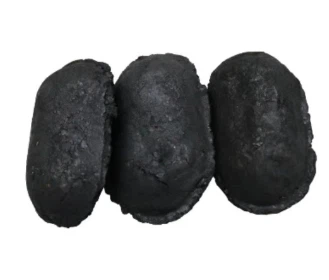How do variations in the particle size distribution of carbon materials within electrode paste affect its flow properties and setting characteristics?
Variations in the particle size distribution of carbon materials within electrode paste can significantly impact both its flow properties and setting characteristics. Here’s how these factors are affected:

1. Flow Properties:
·Viscosity and Rheology: The particle size distribution directly influences the viscosity of the electrode paste. A well-balanced mix of fine and coarse particles can create an optimal packing density, reducing the amount of binder required and thereby lowering viscosity. Fine particles increase the surface area, which can make the paste more viscous and harder to flow. Conversely, a higher proportion of coarse particles may lead to a less viscous paste that flows more easily.
·Homogeneity: A uniform particle size distribution ensures a more homogeneous mixture, which is crucial for consistent flow behavior. If the particle size distribution is uneven, with excessive fines or oversized particles, it can cause segregation during transportation and application, leading to uneven flow and potential blockages in feeding systems.
·Thixotropy: The thixotropic behavior (where the paste becomes less viscous when stirred or agitated) of the electrode paste is also influenced by particle size distribution. A balanced distribution allows the paste to maintain its shape during rest but flow under applied pressure, which is critical for controlled application in submerged arc furnaces (SAF).
2. Setting Characteristics:
·Compaction and Density: The ability of the paste to compact and form a dense, solid electrode is influenced by the particle size distribution. Fine particles fill the gaps between coarse particles, leading to a more densely packed structure upon setting. This enhances the mechanical strength of the electrode and reduces porosity, which is crucial for efficient performance.
·Curing and Carbonization: During the heating and curing process, the setting characteristics of the paste are affected by how well the particles bond with the binder. A diverse particle size distribution can enhance this bonding, allowing for better carbonization and structural integrity. If the distribution is too skewed towards either fine or coarse particles, it could result in weak spots or uneven curing.
·Shrinkage and Cracking: The particle size distribution also impacts the shrinkage behavior of the paste during the drying and setting phases. A well-graded distribution minimizes differential shrinkage, reducing the risk of cracking or deformation as the paste sets and solidifies.
Conclusion:
The particle size distribution of carbon materials within electrode paste plays a crucial role in determining the paste’s flow properties and setting characteristics. A carefully controlled distribution can optimize the paste’s viscosity, ensure homogeneity, and improve its ability to compact and cure properly. This, in turn, enhances the overall performance, durability, and efficiency of the electrode in industrial applications.





